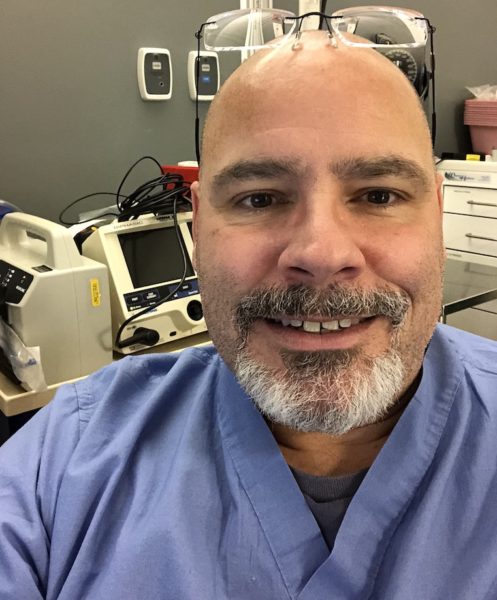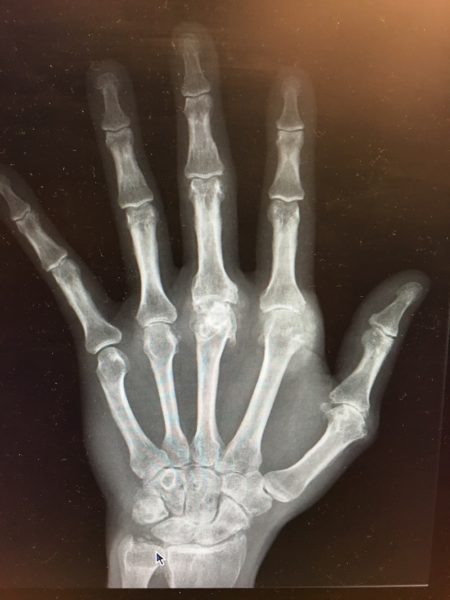Patrick Carson is not a king, except perhaps of his own castle, but he suffers from a painful condition that is sometimes (inaccurately) referred to as the disease of kings. Patrick has gout. He shares his malady with at least one famous King — Henry VIII, but gout was identified long before Henry’s reign. The Egyptians probably discovered it in 2640 BC. They named it podagra, a term that is still used to describe gout in the big toe. Hippocrates also recognized it in the fifth century BC, referring to it as the “unwalkable disease” because it caused so much pain.
What is gout?
In the 2006 article, A concise history of gout and hyperuricemia and their treatment, it says,”Throughout history gout has been associated with rich foods and excessive alcohol consumption. Because it is clearly associated with a lifestyle that, at least in the past, could only be afforded by the affluent, gout has been referred to as the ‘disease of kings’. In some eras, gout was perceived as socially desirable because of its prevalence among the politically and socially powerful.”
Gout is actually a form of inflammatory arthritis that can be affected by eating a diet rich in foods that contain purine (more on that later), but that’s not the whole story. “In most cases, gout is caused by a hereditary defect in the kidneys,” said Dr. Edward Reardon, a Rhode Island Rheumatologist. “The kidneys cannot excrete the same amount of uric acid that they make. Over time, starting in puberty in males and menopause in females, the uric acid starts to accumulate.”
If your body either produces too much uric acid or the kidneys excrete too little, it accumulates as sharp, needle-like urate crystals in the joints and nearby tissues. Gout can show up in any joint — ankle, knee, elbow, wrist, fingers — but the big toe is the most common target.
“It’s because the toe is the coldest joint,” Dr. Reardon explained. “All your joints get progressively colder as you get away from the core. At night, our metabolic rate drops, so our temperature drops and the temperature in the big toe drops even further. It causes a slurry of uric acid crystals in that joint. Once they’re in there they get eaten up by white blood cells which causes an inflammatory response. An attack often occurs at night and wakes people from a sound sleep with excruciating pain. It’s like a boil.”

Patrick’s story
Patrick, whose dad had gout, started having pain in his foot, ankle, and toe when he was in his early 20s. “They said you must have banged it, twisted it, stepped wrong,” he said. “You must not be wearing the right shoe. I was always getting told that it was nothing major. Don’t worry about it, take some ibuprofen.”
When the pain didn’t go away, his doctor suspected Lyme Disease and ordered some tests. One showed that his uric acid level was over 10. Normal is about 7.2 (mg of uric acid per deciliter of blood.) He was diagnosed with gout and put on oral medications. One for pain, the other to reduce inflammation.
Later on, he tried other oral medications but nothing stopped him from having attacks (also called flares). Some people have only one and never another, others only every so often. Patrick, who is now 48, has chronic, recurrent gout, which means he’s endured multiple, severe attacks and the affected areas often stayed inflamed in between the attacks.
Purines
As he learned more about his disease and the link to purines, he decided to try changing his diet. Our body normally produces purines and they’re also found in some foods and drinks. When purine is broken down, uric acid is created, which, ordinarily, is eliminated when you urinate.
These are some things that are high in purines:
- Organ meats — liver, kidneys, sweetbreads, brains, heart
- Game meats — venison, rabbit, squirrel, pheasant, duck, goose
- Other meats in large quantities
- Fatty fish and seafood — anchovies, sardines, herring, mackerel, scallops, shrimp, trout, tuna, mussels, caviar, lobster, haddock
- Beer
“I decided I won’t eat shrimp,” said Patrick. “I won’t eat clams. I’ll go ahead and drink lots of cherry juice and eat celery seeds
“Gout has a little bit to do with diet,” said Dr. Reardron. “Foods can feed the purine pool, but even a person who followed the perfect gout diet would get it if [he/she] had a predisposition to the disease.”
As time went on, Patrick’s attacks became more painful, more frequent and longer lasting. Then he began to notice some damage, first in his hands and elbows, then his feet and knees. The x-ray shows the damage in his hand. Uric acid crystals had built up so much they created lumps called tophi under his skin. Sometimes they got so big the skin broke and the crystals drained a white toothpaste-like substance.
He is a physician assistant at a local hospital and oftentimes, was in terrible pain. “I spent many days at work, limping around on a foot that was red, swollen, and painful,” he said. “I had to work. I’m a single dad and had to support myself and my daughter so I had to grin and bear it.”
Relief
In October 2016, Patrick began a new approach to treatment —an intravenous drug that changes excess uric acid into a substance that can be easily eliminated in the urine. It’s for people like him who haven’t had any success with other gout medications. The treatment is a huge commitment — a four-hour IV infusion every two weeks, with blood tests in between to monitor his uric acid levels. Eventually, he’ll go back to oral medications, but for now, he’ll continue with the IV treatment.
“It helped shrink the tophi on my elbows and hands,” he said. “I can actually get rings on my fingers again which I couldn’t do for years. I can really grip a peanut butter jar which was really difficult for me to do when I was in full-blown gout. I’m not sitting on the couch in pain. I’m feeling good.”
Successfully treating gout usually involves medications and lifestyle changes. The goal of medications is generally twofold: To decrease the pain and inflammation associated with an acute attack and to prevent future attacks by regulating uric acid levels. The Arthritis Foundation has a comprehensive overview of gout medications on its website.
Disclaimer
When they share their perspectives about uncontrolled gout, Patrick and Dr. Reardon are generally compensated for their time by pharmaceutical companies that sell gout treatments, including the IV medication. They were NOT compensated for doing the interviews for this blog post.
If you have gout, in particular, recurrent gout like Patrick, my recommendation is that you see a rheumatologist who can work with you to choose a course of treatment that is best suited to your needs.



This was a great post. Enjoyed reading it because my father too suffered for years with painful gout. Nice reporting.
Interesting! My husband has gout and I did not know about the IV treatment (though that sounds like it is for more intense/chronic cases). Thanks for this post.
You are welcome!
Interesting! My husband has gout and I did not know about the IV treatment (though that sounds like it is for more intense/chronic cases). Thanks for this post.